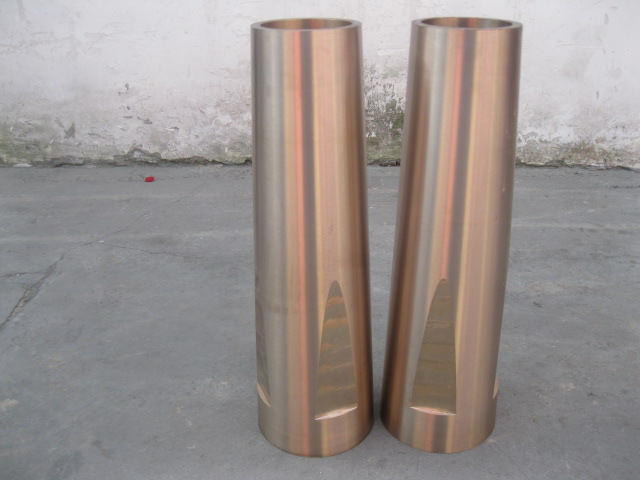The wear resistance of main shaft bushing is an important part of its performance, and there are many factors affecting its wear resistance. The following is a detailed analysis of the factors affecting the wear resistance of the main shaft bushing:
Factors affecting the wear resistance of main shaft bushing 1: Material type: The material of main shaft bushing is an important factor determining its wear resistance. Different copper alloy materials have different hardness, strength and corrosion resistance, which directly affect the wear resistance of copper sleeve. For example, aluminum bronze copper sleeves and tin bronze copper sleeves usually have higher hardness and strength, so their wear resistance under high speed and high load conditions is better than that of brass copper sleeves and zinc-based copper sleeves.
Factors affecting the wear resistance of main shaft bushing 2: Element content: The element content in the copper sleeve, such as zinc, tin, lead, aluminum, etc., will also affect its wear resistance. For example, aluminum bronze + graphite copper sleeve forms a porous structure by adding graphite elements, reducing the wear and friction coefficient of the copper sleeve, thus improving the wear resistance.
Factors affecting the wear resistance of main shaft bushing 3: Processing technology: The casting and processing technology of main shaft bushing have a significant impact on its wear resistance. Different casting methods, such as sand casting, metal casting, centrifugal casting, etc., as well as subsequent heat treatment, mechanical processing and other processes, will affect the microstructure and physical properties of the copper jacket, thus affecting its wear resistance.
Factors affecting the wear resistance of the main shaft bushing 4: Conditions of use: the use conditions of the copper sleeve, including working temperature, load, sliding speed, lubrication conditions, etc., will affect its wear resistance. For example, in the absence of lubricants and the use of water lubricants, the sliding and self-lubricating properties of some copper sleeves will be affected.

Factors affecting the wear resistance of main shaft bushing 5:Surface treatment: The surface treatment technology of the copper sleeve, such as coating, coating, etc., can improve its surface hardness and reduce friction, thereby improving the wear resistance.
The influence factor of the wear resistance of the main shaft bushing 6: Dimensional accuracy: the dimensional accuracy of the copper sleeve and the fit clearance will also affect its wear resistance. Too large or too small a clearance can cause excessive wear during operation of the copper sleeve.
main shaft bushing wear resistance factors 7:Maintenance: Copper sleeve maintenance and maintenance will also affect its wear resistance. Regular inspection, cleaning and replacement of lubricants can extend the service life of copper sleeves and reduce wear.
Factors affecting the wear resistance of main shaft bushing 8:Environmental factors: corrosive media, temperature, humidity, etc. in the environment will also affect the wear resistance of the copper sleeve. For example, when copper jacket is working in a corrosive environment, its corrosion resistance and wear resistance will be challenged.
In general, the wear resistance of main shaft bushings is affected by a variety of factors, including material type, element content, processing technology, service conditions, surface treatment, dimensional accuracy, maintenance and environmental factors. When selecting and using main shaft bushings, these factors should be taken into account to ensure that the copper sleeve can achieve the best wear resistance in a specific application.
| Previous:Characteristics and applications of flanged copper bushings | Next:What is the purpose of bronze bushing product testing |




 Copyright © 2022
Copyright © 2022